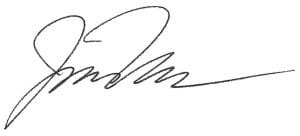The stock market today is celebrating the rapid reversal in the Fed’s hawkish attitude under the tenure of Jay Powell.
Oct. 3/2.18 Fed Funds Rate: 'We may go past neutral. But we’re a long way from neutral at this point, probably.'
Nov 28/2.2 Fed Funds Rate: 'Funds rate is just below the broad range of estimates of the level that would be neutral for the economy.' pic.twitter.com/zRgnehOmG7
— Jesse Felder (@jessefelder) November 28, 2018
Surely there are some measures that suggest the extent of the current monetary tightening campaign has already surpassed that of those of the recent past.
Including the Wu-Xia shadow federal funds rate it looks like the current tightening cycle has already surpassed a level that has historically aligned with the US economy hitting reverse. https://t.co/GPldCRZdrH pic.twitter.com/FmvyD1Hrpm
— Jesse Felder (@jessefelder) November 26, 2018
But if the Fed is now backing off because monetary tightening has already exerted its typical effect on the credit cycle this is certainly not bullish for risk assets.
Historically, peaks in corporate borrowing have been followed by recessions. In the first quarter of 2018, US companies held a total of $29.6 trillion in debt, more than ever before and only slightly off its all-time peak in the last quarter of 2017. https://t.co/TZD1SSEqFI pic.twitter.com/X89Rt92Tft
— Jesse Felder (@jessefelder) November 28, 2018
In this vein, the Fed made another announcement today in releasing its first ever Financial Stability Report. The following passage caught my eye.
Trade tensions, geopolitical uncertainty, or other developments could make investors more averse, in general, to taking risks https://t.co/dMRwXCIMBD pic.twitter.com/inEGqWtkdP
— Jesse Felder (@jessefelder) November 28, 2018
Working backwards through this excerpt let’s first look at this corporate “sector where leverage is already high.” In fact, it’s higher than at any point over the past couple of decades.
Leverage of some firms is near its highest level seen over the past two decades https://t.co/dMRwXCIMBD pic.twitter.com/7IIqdXLFP4
— Jesse Felder (@jessefelder) November 28, 2018
Turning next to “valuations appear elevated relative to historical levels” it’s pretty clear that, according to any number of measures, the equity market is about as overvalued today as it has ever been.
NEW POST: Yes, The Stock Market Is Just As ‘Stupid-Bat-$hit-Crazy Expensive’ Today As It Was At The Peak Of The DotCom Mania https://t.co/REnSPZZljh ht @kevinmuir pic.twitter.com/47dKH1jASG
— Jesse Felder (@jessefelder) September 27, 2018
Put extreme equity valuations together with extreme corporate leverage and you get the most overvalued corporate sector in history.
US Corporate Enterprise Value-to-GVA hit a new record high in Q2: pic.twitter.com/uXy0NjIKIR
— Jesse Felder (@jessefelder) November 28, 2018
Finally, while valuations demonstrate that “appetite for risks in general” have been extremely high in recent years, there are a number of signs recently that show this is in the process of shifting. Risk appetites in corporate bonds appear to be rapidly waning.
U.S. junk bond yields reach the highest levels in more than two years. Borrowing costs for riskier companies are now 2.5 percentage points higher than the all-time low reached in 2014. pic.twitter.com/b0n9oAz9qL
— Lisa Abramowicz (@lisaabramowicz1) November 28, 2018
At the same time, risk appetites in equities also appear to be waning at an equally rapid pace.
'The outperformance for defensives as just getting started, because FAANG underperformance is also in its early innings.' https://t.co/2AbnolGPTE pic.twitter.com/aYnIHGpf3U
— Jesse Felder (@jessefelder) November 28, 2018
The combination of extreme valuations and waning risk appetites means, in the words of the Fed, the “resulting drop in asset prices might be particularly large.” Large relative to what? The bear markets of the past couple decades? If so, investors ought to be a bit more worried than they appear at present.

